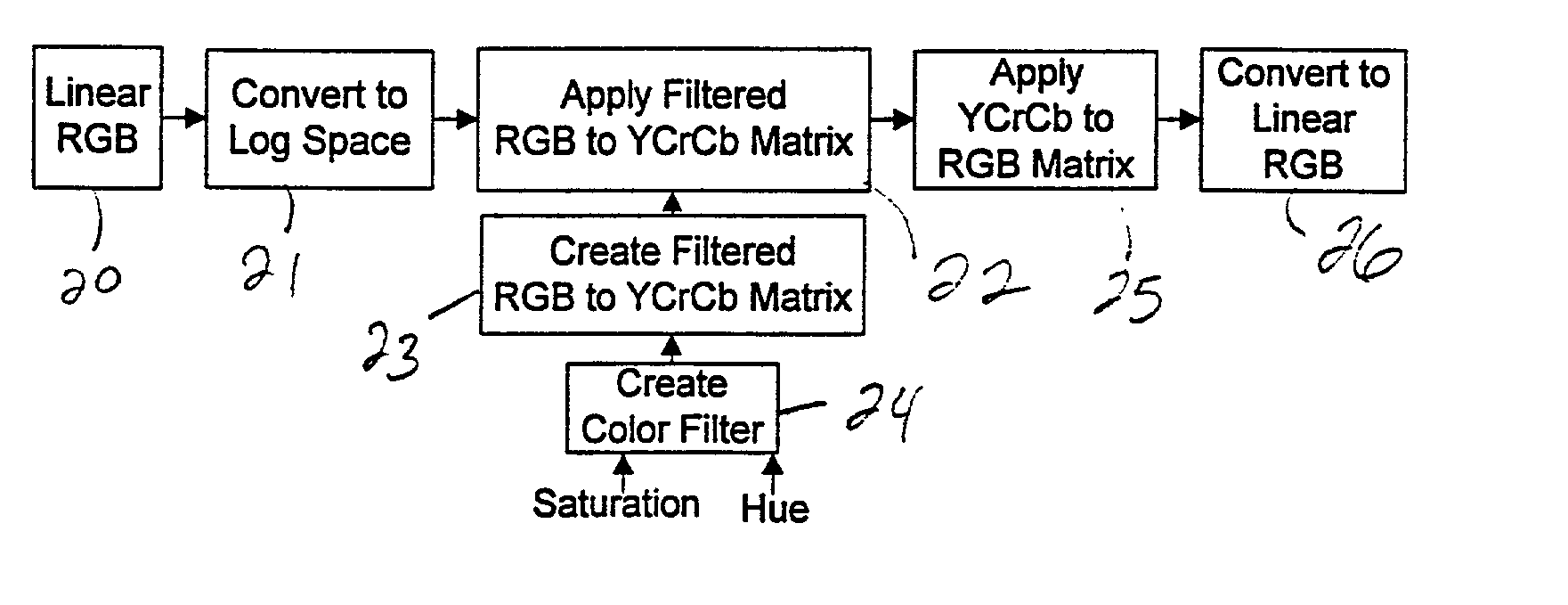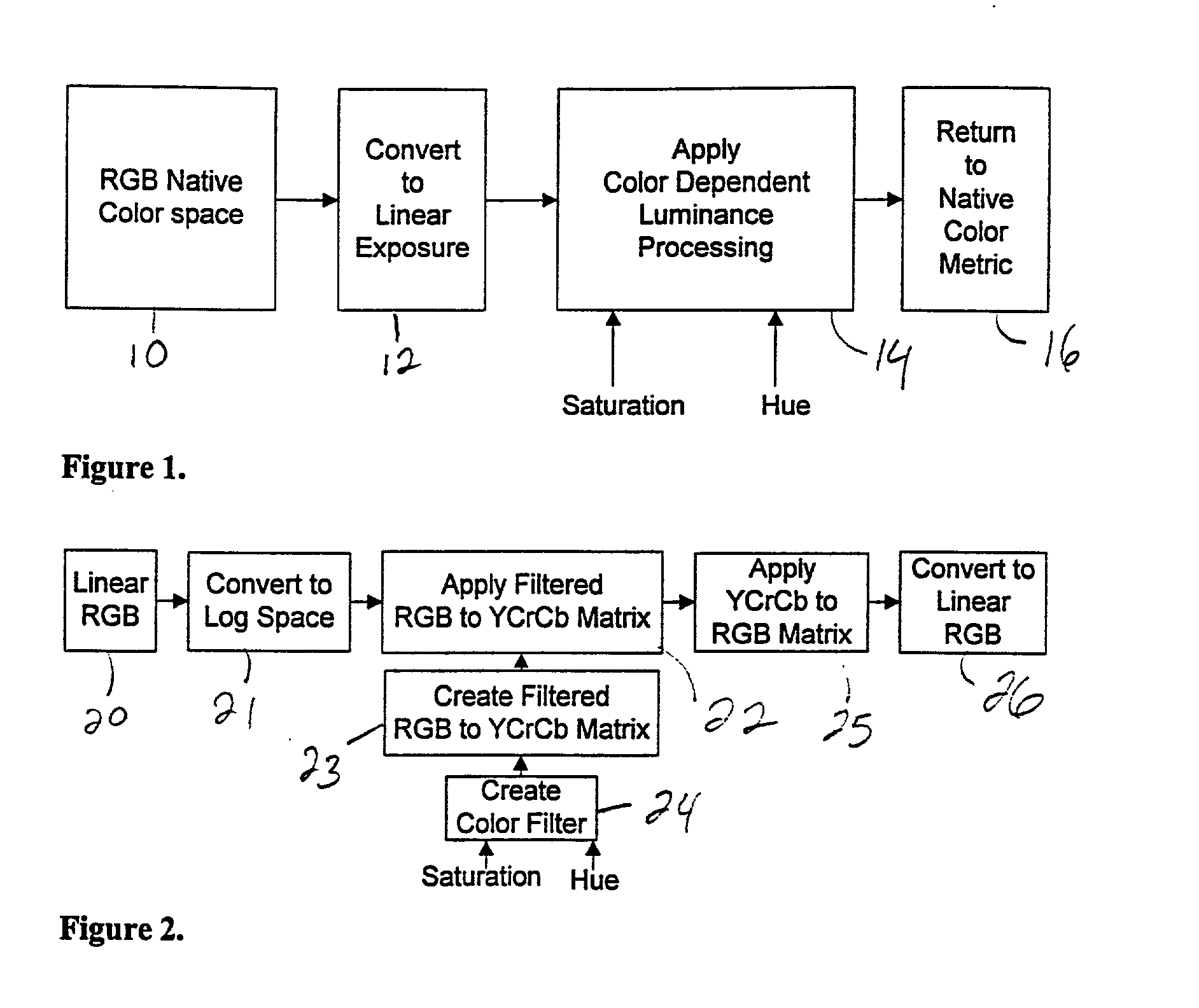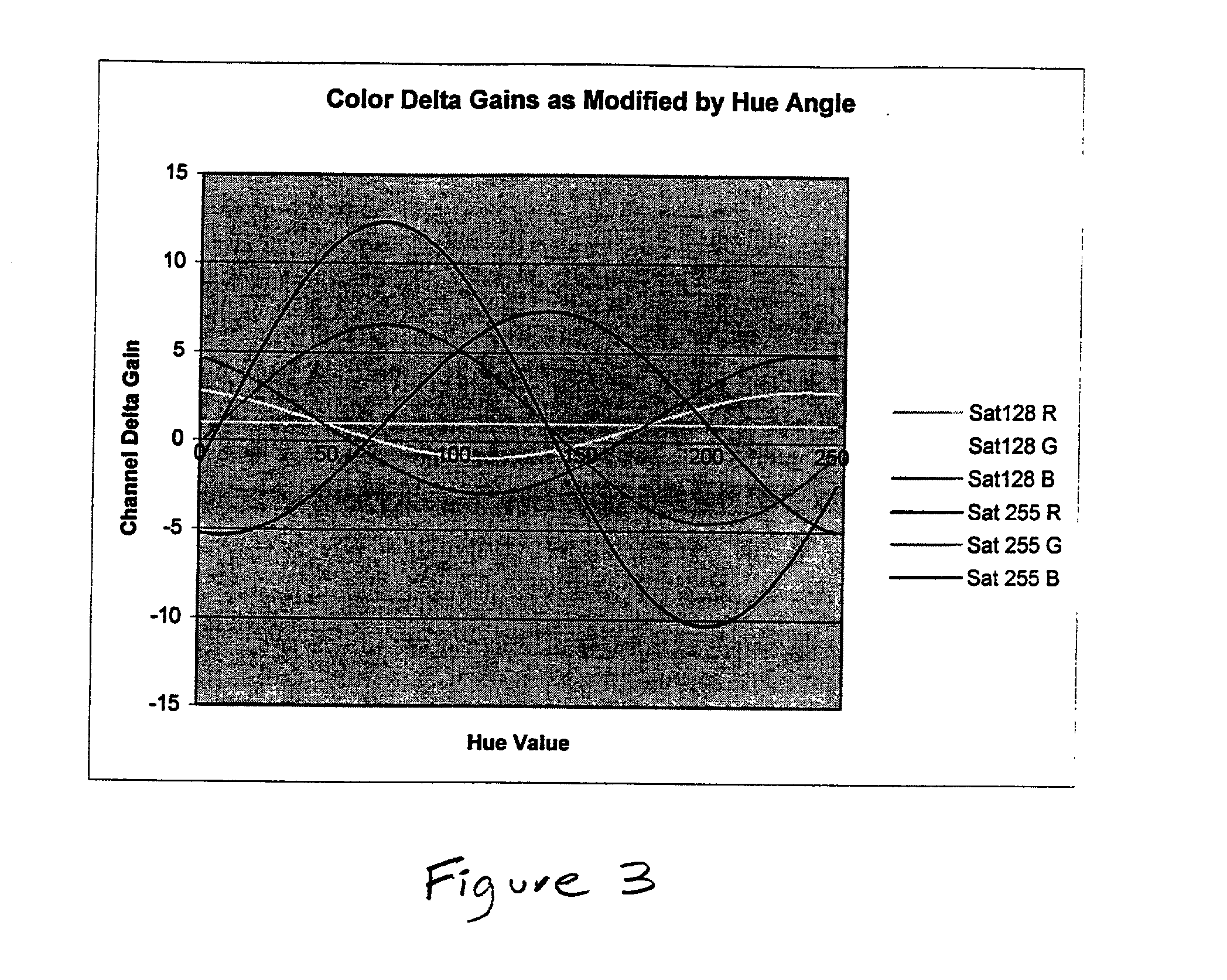Color dependent luminance processing
a luminance processing and color-dependent technology, applied in the field of digital image processing, can solve the problems of unfavorable yellow color cast and adverse effects on another portion of the imag
- Summary
- Abstract
- Description
- Claims
- Application Information
AI Technical Summary
Benefits of technology
Problems solved by technology
Method used
Image
Examples
Embodiment Construction
[0015] The invention achieves the foregoing advantages by converting an image from red-green-blue (RGB) space into luminance and chrominance space, filtering (based upon color) the luminance channel, and returning the image to RGB space, to allow different color filters to be selectively applied to an image. Typically, the luminance channel is created from a linear combination of the red, green and blue channels in a way that mimics the photopic efficiency function. However, with the invention, the luminance channel is created from a combination (linear or non-linear) of red, green and blue as though they pass through a color filter, so as to achieve the desired luminance contrast. This new luminance channel is then re-combined with the chrominance channels and converted back to RGB.
[0016] An optical color filter selectively attenuates the luminance of the image based upon wavelength of light reflected from an object. Theoretically, any region or combination of regions of the color ...
PUM
| Property | Measurement | Unit |
|---|---|---|
| focal distance | aaaaa | aaaaa |
| luminance | aaaaa | aaaaa |
| color | aaaaa | aaaaa |
Abstract
Description
Claims
Application Information
 Login to View More
Login to View More - R&D
- Intellectual Property
- Life Sciences
- Materials
- Tech Scout
- Unparalleled Data Quality
- Higher Quality Content
- 60% Fewer Hallucinations
Browse by: Latest US Patents, China's latest patents, Technical Efficacy Thesaurus, Application Domain, Technology Topic, Popular Technical Reports.
© 2025 PatSnap. All rights reserved.Legal|Privacy policy|Modern Slavery Act Transparency Statement|Sitemap|About US| Contact US: help@patsnap.com



